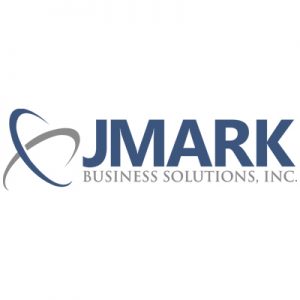In today’s world, every business is an IT business. Yes, even your bank. That’s why it’s more important than ever to manage your information technology well. But there are two sides to the IT coin. At JMARK, we call these the operations of IT and the business of IT. Both must be handled with strategic intention.
Operations of IT: This is defined as the day-to-day delivery of IT services that ensures an organization can maximize its technology investment so people can maximize their productivity. This is accomplished through help desk services; security; server, network, and workstation management; backup and business continuity strategies; application and data management; patch management; firmware; and vendor update management.
Business of IT: This is defined as the strategies that ensure technology design meets the mission of the organization and aligns those outcomes with the budget and lifecycle management plans. It should result in appropriate investments to protect the organization from risks associated with underspending, wasting of resources, and overspending. By properly aligning design, resources, and capabilities, your technology will advance your bank toward its objectives.

Establish spending benchmarks against banking industry standards. Best practice in the financial industry sets the typical technology spending range between 2.5% and 7% of an organization’s operational budget. This variance is based on the sophistication of the business, compliance requirements, and growth plans.
In this article, we’ll focus on the business of IT. Make sure you’re managing this side of the coin well by building the following eight actions into your operations:
- Align IT with the strategic business plan. IT should support and complement your bank’s business plan. For many organizations, IT is seen as a static tool, not a means to achieve strategic objectives. However, in 2022, this is non-negotiable. Achieving your goals means capitalizing on how technology can augment everything you do.
- Plan the lifecycle for every piece of hardware and software. When a component goes into usage, your bank should know when it will be removed. Depending on the technology, this can be a three, four, or five-year cycle. Doing this helps align the budget with amortization schedules. JMARK recommends having a five-year rolling budget for all IT components. This should include all hardware assets, warranty management, software renewal and subscription fees, software upgrades and maintenance fees, labor costs (internal or outsourced), data center and hosting costs, communications costs (internet), power management, etc. Nothing that is known or anticipated should be left out.
- Increase your IT budget by 3% to 5% per year for the next few years. This is important because of the increasing sophistication of IT and security management and increasing regulation. Frankly, it is getting more challenging to manage IT; therefore, costs are increasing. However, they should not be increased at a faster pace than the gross margins of your business.
- Establish spending benchmarks against banking industry standards. Best practice in the financial industry sets the typical technology spending range between 2.5% and 7% of an organization’s operational budget. This variance is based on the sophistication of the business, compliance requirements, and growth plans.
- Include training plans. Most organizations only utilize around 30% of their applications’ capabilities. With robust training, you can bump that to 75% or more. This drives efficiency and profitability and often removes duplicative applications from the environment, reducing the complexity and costs of IT.
- Develop business continuity and disaster recovery plans. These should be aligned with the expectations of your institution’s board of directors. Most businesses do not have clarity between the IT structure and its leadership. Consequently, senior leaders may believe that recovery time after a disaster is less than one day, when in reality, it may be closer to 14 days. Such gaps between reality and expectation create massive pain and frustration throughout the business. They can even lead to business failure when lack of alignment leads to ill-informed business plans.
- Simplify your environment. Simplification is the ultimate sophistication. A common tendency is to over-engineer and overbuy, making a network more complicated than it needs to be. Right-sizing the environment can decrease cash requirements, remove overspending, and reduce the complexity of an environment, all of which lowers IT management costs over time.
- Invest in research, development, and market management. Most businesses need a dedicated group of people who are paid in part or in full — depending on the size of the bank and local market — to focus their energy on research and development and knowing the market. Every day, innovative organizations develop new applications, capabilities, delivery methods, and other breakthroughs to help your bank. These solutions can be the difference between keeping up with the competition, leaving the competition behind, or being wiped out by a disruptive new entrant in your industry.
These are the essentials for properly managing the business of IT. Of course, this is a very high-level overview of these actions. One of the most significant advantages of working with an experienced managed services provider is they can bring experience to the table in helping you stabilize your efforts in these areas so you can take the next step and make your technology a strategic advantage.
If you’d like to learn how these practices can be carried out in your specific bank, please reach out to Tom Douglas at Tom@JMARK.com.









